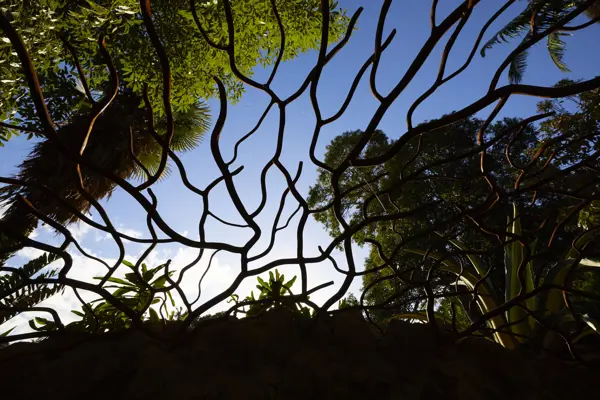
Tara Hopley
Research Scientist (Conservation Genetics)
Tara Hopley is a conservation geneticist working on the genetic diversity and structure of a selection of rare or threatened plant species. Conservation genetics contributes to safeguarding biodiversity and maintaining healthy populations by helping us to understand and manage the genetic variation within species.
Tara’s experience extends to both native and non-native plant species across Australia to inform management actions. Her work has included population genetics for informing weed management, including identifying the number and source of introductions. Her work on native species has included identifying patterns of adaptive variation to enable more informed approaches to seed sourcing, helping to maximise persistence of plants in revegetation programs.
Publications
Hopley, T., & Byrne, M. 2022. Implications of climate change on a floodplain shrub: Associations between genomic and environmental variation. Global Ecology and Conservation, 40. https://doi.org/10.1016/j.gecco.2022.e02340
Hopley, T., Webber, B. L., Raghu, S., Morin, L., & Byrne, M. 2021. Revealing the Introduction History and Phylogenetic Relationships of Passiflora foetida sensu lato in Australia. Frontiers in Plant Science, 12. https://doi.org/10.3389/fpls.2021.651805
Ahrens, C. W., Jordan, R., Bragg, J., Harrison, P. A., Hopley, T., Bothwell, H., Murray, K., Steane, D. A., Whale, J. W., Byrne, M., Andrew, R., & Rymer, P. D. 2021. Regarding the F-word: The effects of data filtering on inferred genotype-environment associations. Molecular Ecology Resources, 21(5). https://doi.org/10.1111/1755-0998.13351
Hopley, T., & Byrne, M. 2019. Gene flow and genetic variation explain signatures of selection across a climate gradient in two riparian species. Genes, 10(8). https://doi.org/10.3390/genes10080579
Gosper, C. R., Hopley, T., Byrne, M., Hopper, S. D., Prober, S. M., & Yates, C. J. 2019. Phylogenomics shows lignotuber state is taxonomically informative in closely related eucalypts. Molecular Phylogenetics and Evolution, 135. https://doi.org/10.1016/j.ympev.2019.03.016
Hopley, T., & Byrne, M. 2018. Connectivity in riparian plants: influence of vegetation type and habitat fragmentation overrides water flow. Oecologia, 188(2), 465–478. https://doi.org/10.1007/s00442-018-4226-z
Broadhurst, L., Hopley, T., Li, L., & Begley, J. 2017. A genetic assessment of seed production areas (SPAs) for restoration. Conservation Genetics, 18(6). https://doi.org/10.1007/s10592-017-0977-z
Zwart, A. B., Elliott, C., Hopley, T., Lovell, D., & Young, A. 2016. Polypatex: An R package for paternity exclusion in autopolyploids. Molecular Ecology Resources, 16(3). https://doi.org/10.1111/1755-0998.12496
Hopley, T., & Young, A. G. 2015. Knowledge of the reproductive ecology of the invasive Salix cinerea, in its invaded range, assists in more targeted management strategies. Australian Journal of Botany, 63(6). https://doi.org/10.1071/BT15018
Hopley, T., Zwart, A. B., & Young, A. G. 2015. Among-population pollen movement and skewed male fitness in a dioecious weed. Biological Invasions, 17(7). https://doi.org/10.1007/s10530-015-0867-6

